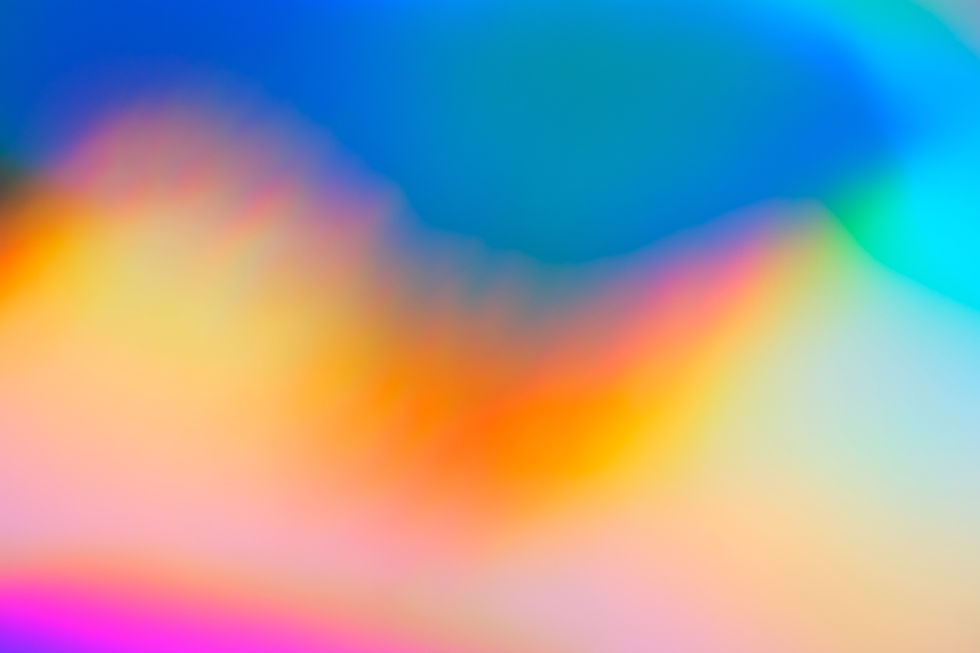Exploring the Void - Visuals & Floating (Part 1)
- Michael Cordova
- Sep 16, 2022
- 3 min read

My first float was something else! I entered the float tank with child like curiosity, something I had not felt for a while. I had questions running through my mind, will I fall asleep? am I going to enjoy it? how am I going to get the most out of the session? What is going to happen?
I didn’t fall asleep as such but entered a deep meditative state akin to NREM sleep. I thoroughly enjoyed it, so much so that I became a member! I got the most out of the session by having no expectations, going with the flow and surrendering myself to the float.
Apart from feeling totally relaxed, serene and as though a great weight had been lifted from my shoulders. I had an extremely animated and visual experience with my eyes closed and open. This included shapes, colours, patterns, faces and symbols. This was 8 years ago, since then I have had varying degrees of visuals whilst floating. From travelling through tunnels, hieroglyphics to colours and shapes.
A number of people that have floated with us have had a range of visual experiences, this has mainly been different colours. On the rare occasion some people have seen more detailed visuals. Now this raises a few questions, which I will answer over two parts!
Why do we sometimes see colours with our eyes closed during a float session?
Those mysterious blobs and patterns that bedazzle the backs of your eyelids during a float are no illusion. What you see is real light and it’s coming from inside your eyes!
As you settle into your float session, close your eyes and begin to enter a deeper state of meditation, you may notice the colourful light show happening inside your eyelids. The lights suddenly intensify, and bursts of bright colours appear all across your field of vision. A few seconds later, the colours settle down again. While you might appreciate the floatation entertainment, in the back of your mind you’ve probably wondered what you’re even seeing.
These strange blobs you see have a name; they’re called “phosphenes,” and researchers believe that actual light may play a role. But not ordinary light — this light comes from inside your eyes. In the same way that fireflies and deep-sea creatures can glow, cells within our eyes emit biophotons, or biologically produced light particles.
“We see biophotonic light inside our eyes in the same way we see photons from external light,” said István Bókkon, a Hungarian neuroscientist who works at the Vision Research Institute in Lowell, Massachusetts.
Biophotons exist in your eyes because your atoms constantly emit and absorb tiny particles of light, or photons. This photon exchange is just a part of normal cellular function. Your eyes can’t tell the difference between photons from outside light and the biophotons emitted by your own atoms. Either way, your optic nerve simply relays these light signals to the brain, which must then decide if it accurately represents the real world around you, or if it’s just a phosphene.
Our eyes actually produce far more biophotons than we end up seeing as phosphenes.
Almost all of the biophotons you see are the ones both emitted and absorbed by atoms in the retina — the part of your eye responsible for detecting light.
Inside the retina, millions of tiny cells called rods and cones collect light and convert it into electrical signals. These signals travel through the optic nerve to a part of the brain called the visual cortex. Here, the brain reconstructs an image using the information received from the eyes. When a reconstructed image looks like nonsense, the brain is quick to label the image as unreal, or a phosphene.
Depending on where a phosphene originates, it can take on a variety of shapes, patterns and colours. Different atoms and molecules emit photons of different wavelengths, which is why we see different colours. A phosphene with an orderly geometric pattern like a checkerboard may have originated in a section of the retina where millions of light-collecting cells are arranged in a similarly organized pattern. Researchers have also found that different areas of the brain’s visual cortex create certain specific shapes of phosphenes.
In the 1950s, the German researcher Max Knoll at the Technische Universität in Munich came up with a classification scheme for phosphene shapes. He studied phosphenes in over a thousand volunteers and came up with 15 categories, including triangles, stars, spirals, spots and amorphous blobs. Most phosphenes occur spontaneously when the atoms in our eyes exchange their biophotons.
So next time you jump into a float pod, close your eyes and admire the phosphenes. Now that you can appreciate the visual effects in a whole new way, you can just lay back and enjoy the show.
In part 2 I will be exploring the more detailed visuals a small number of us see during a float session.



Comments